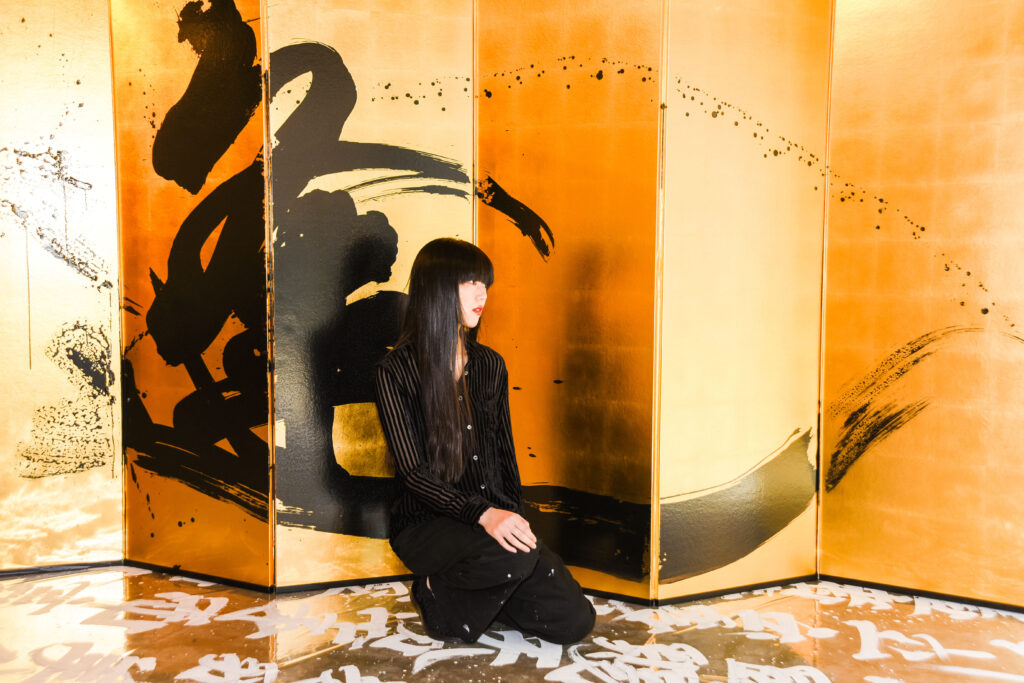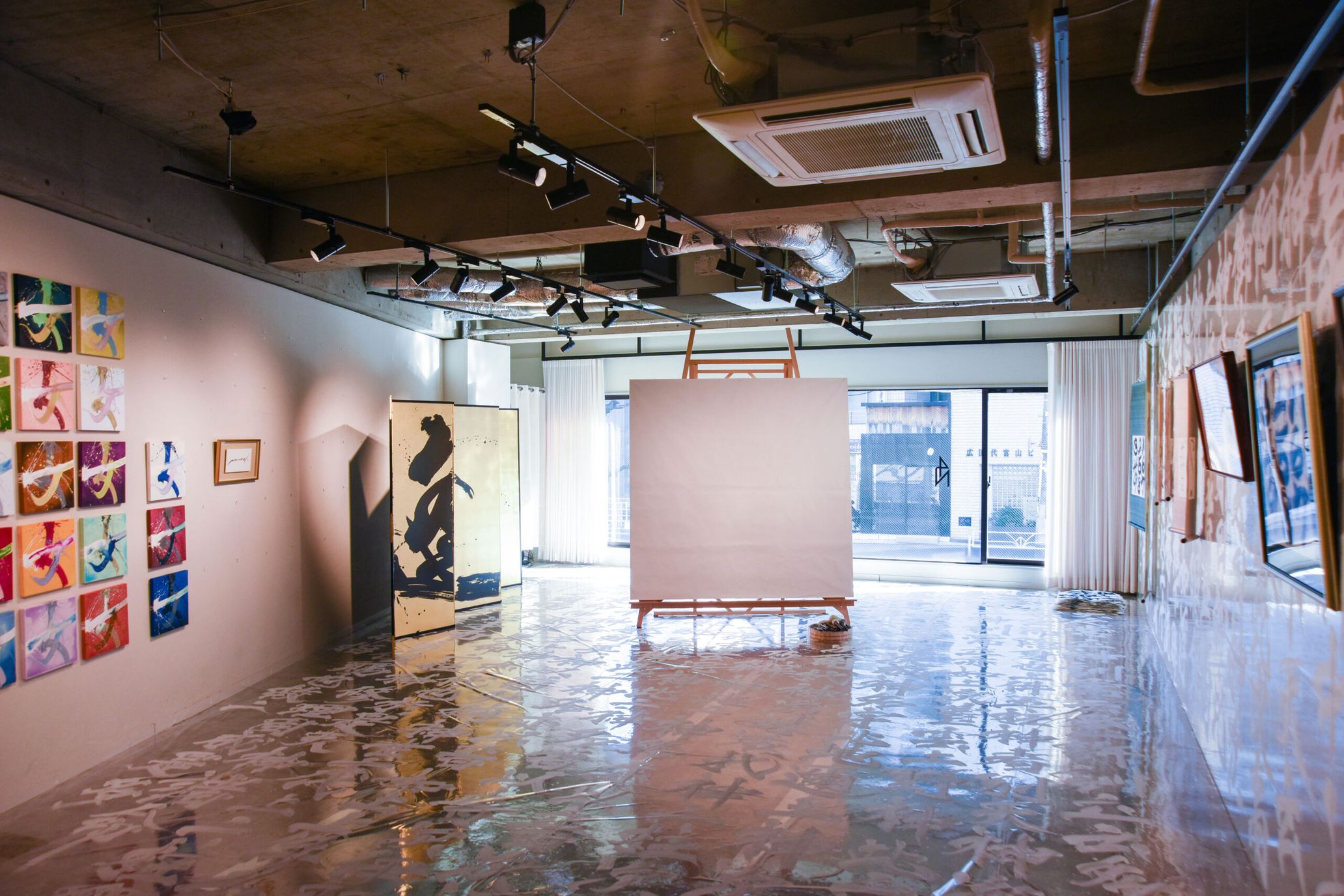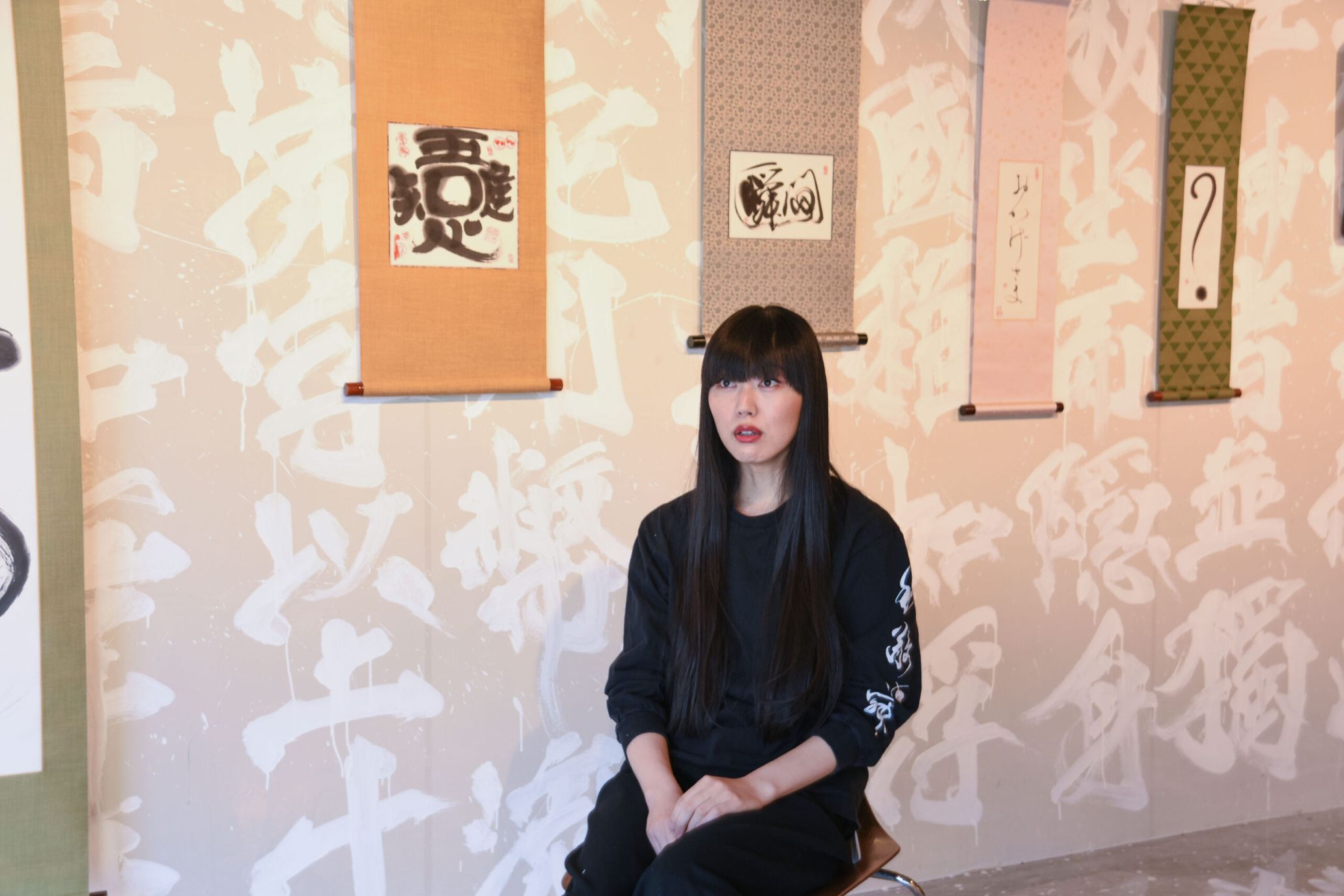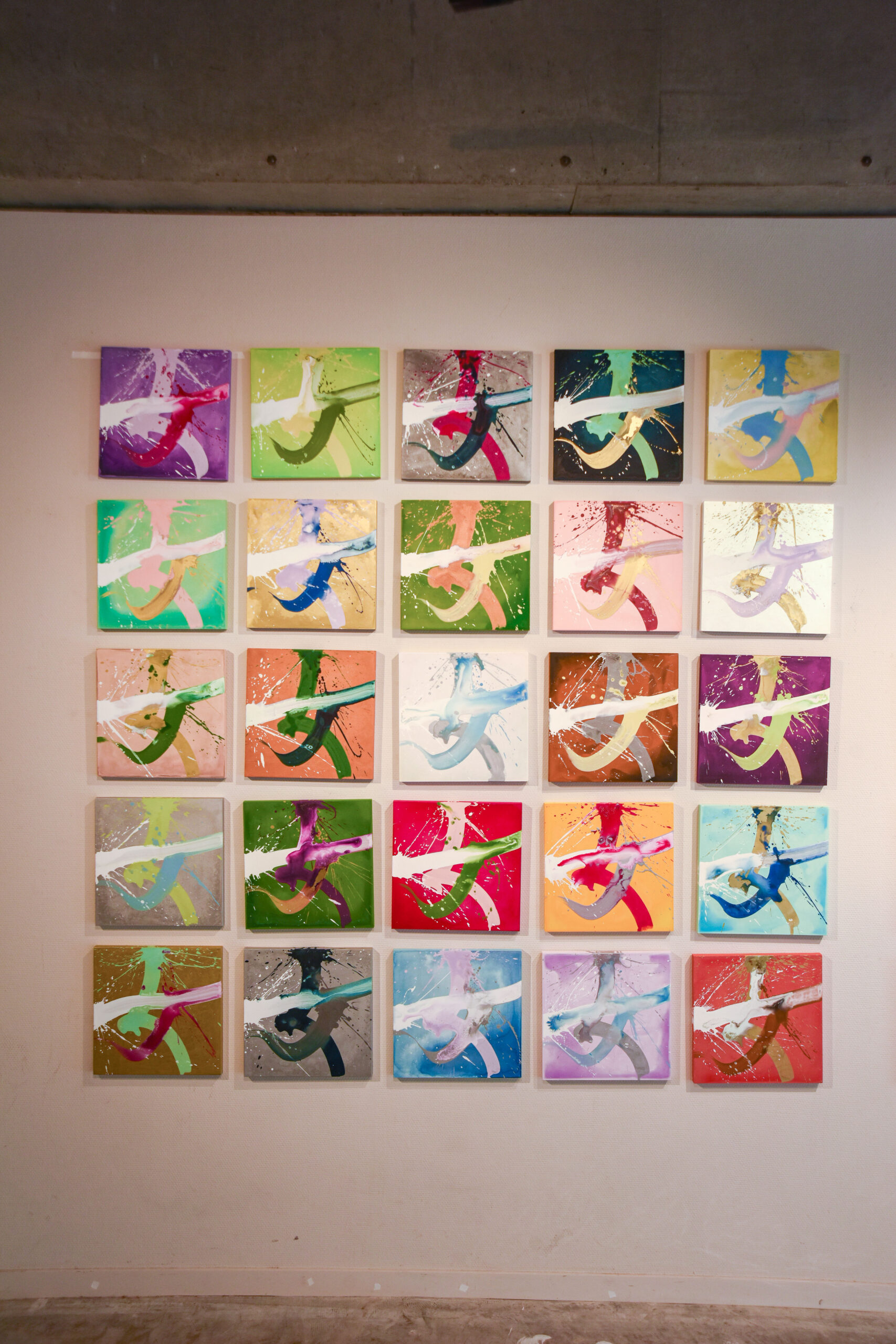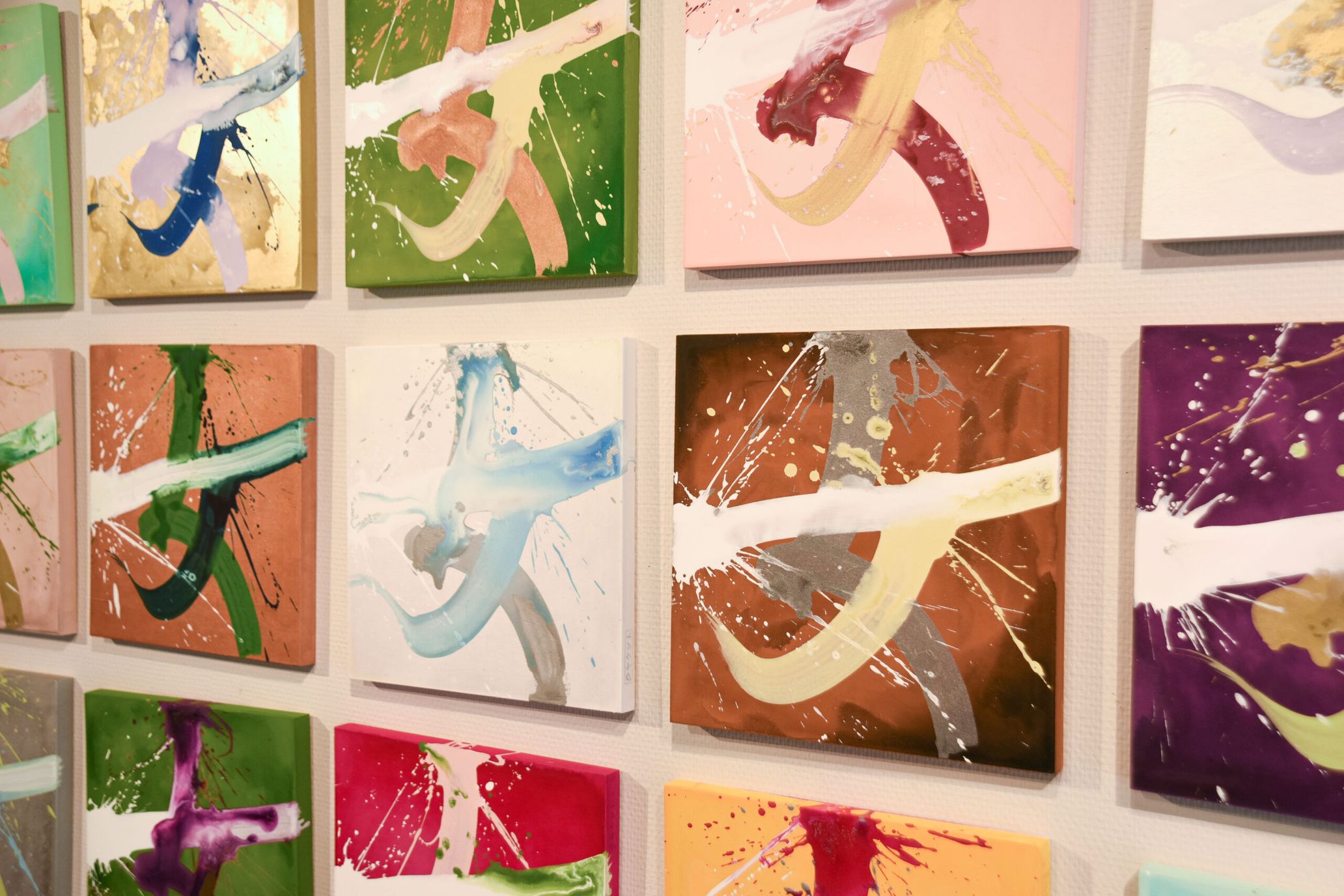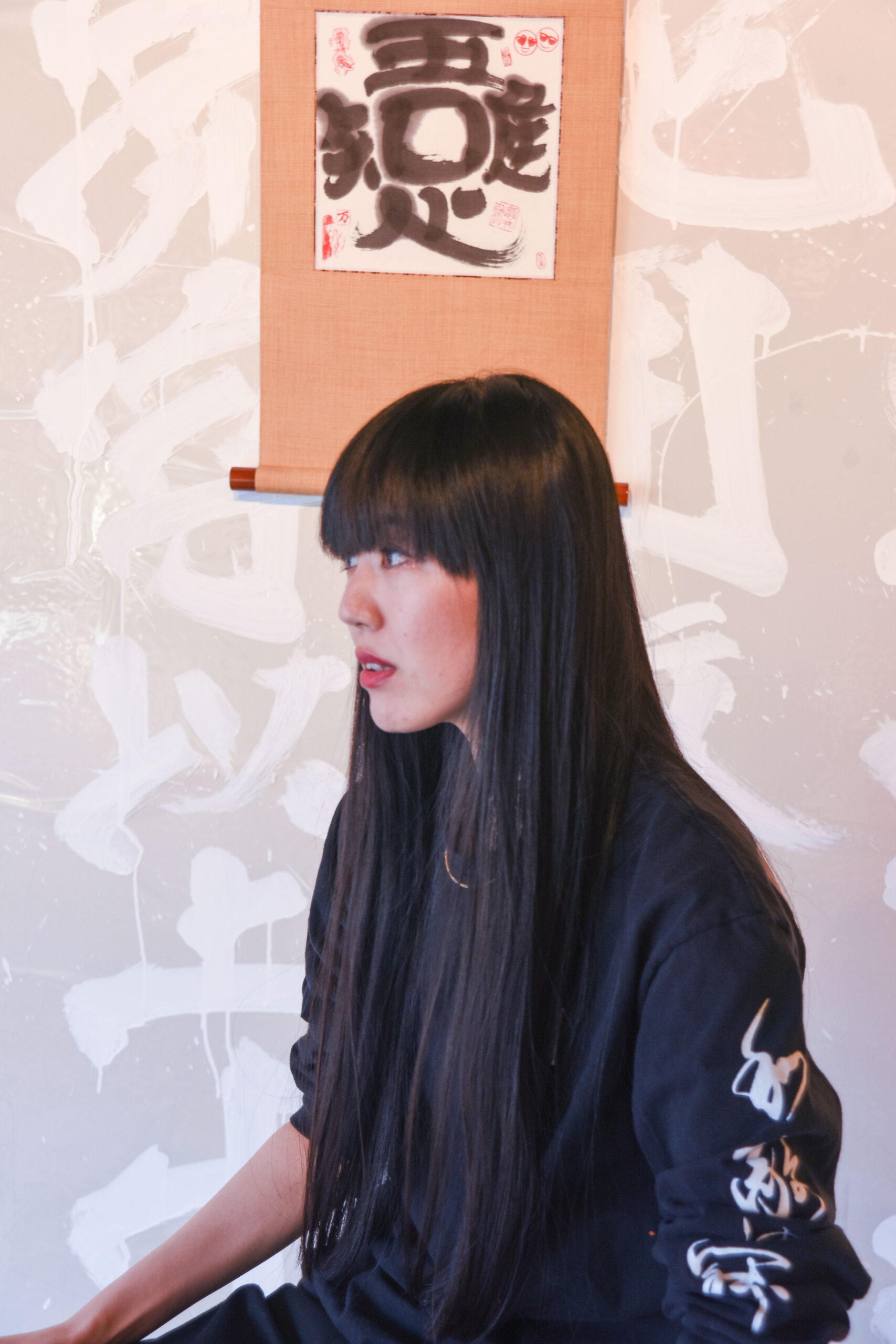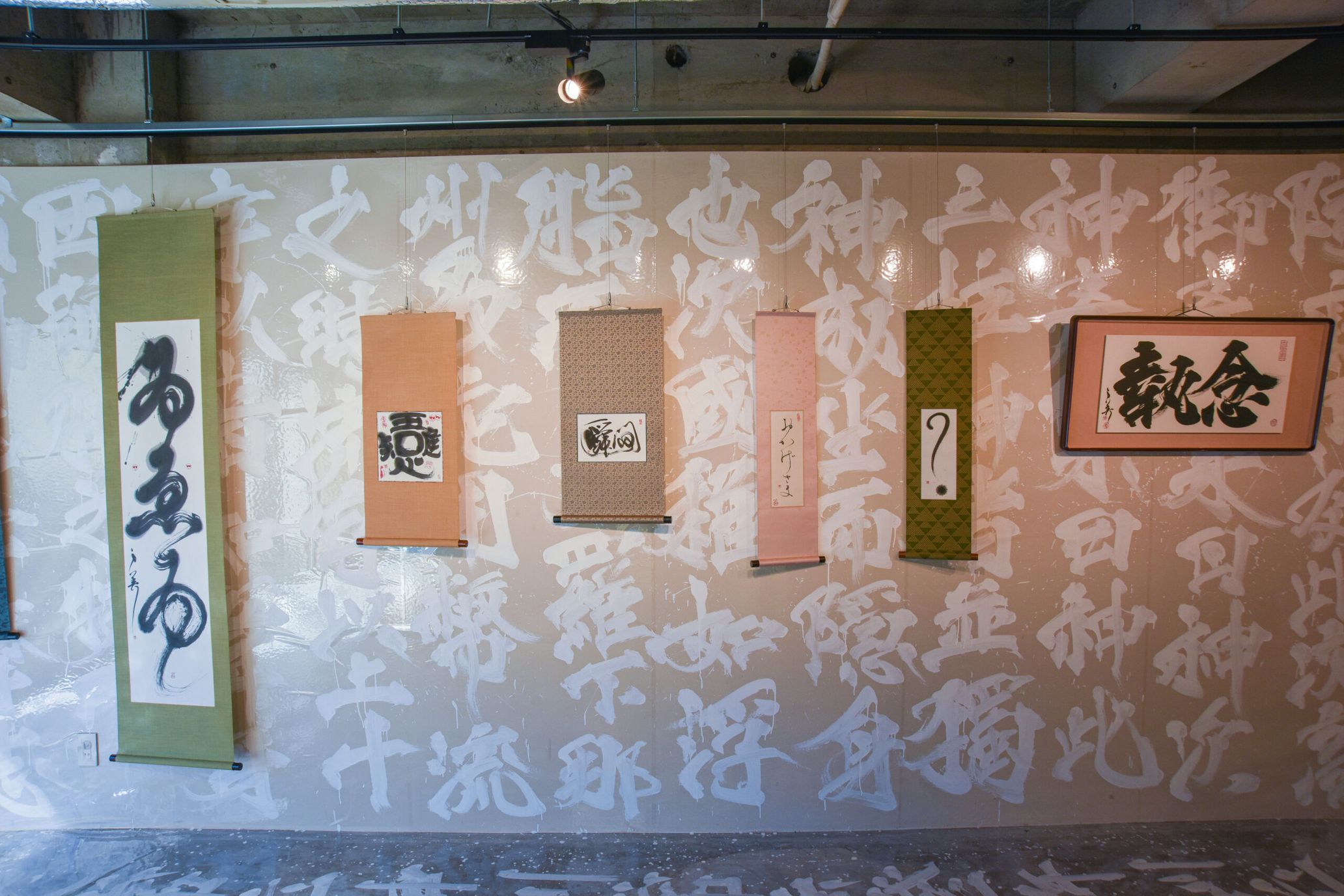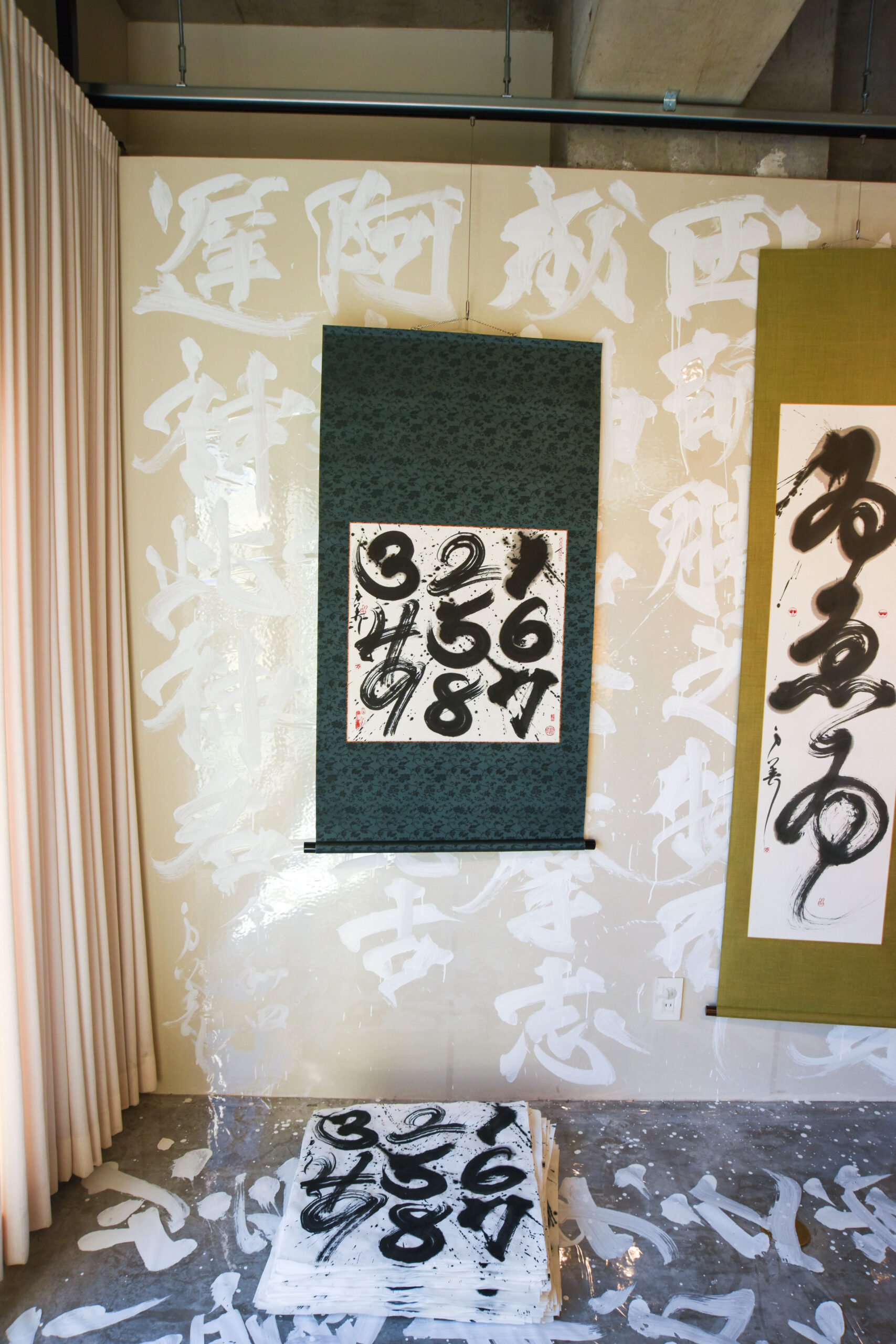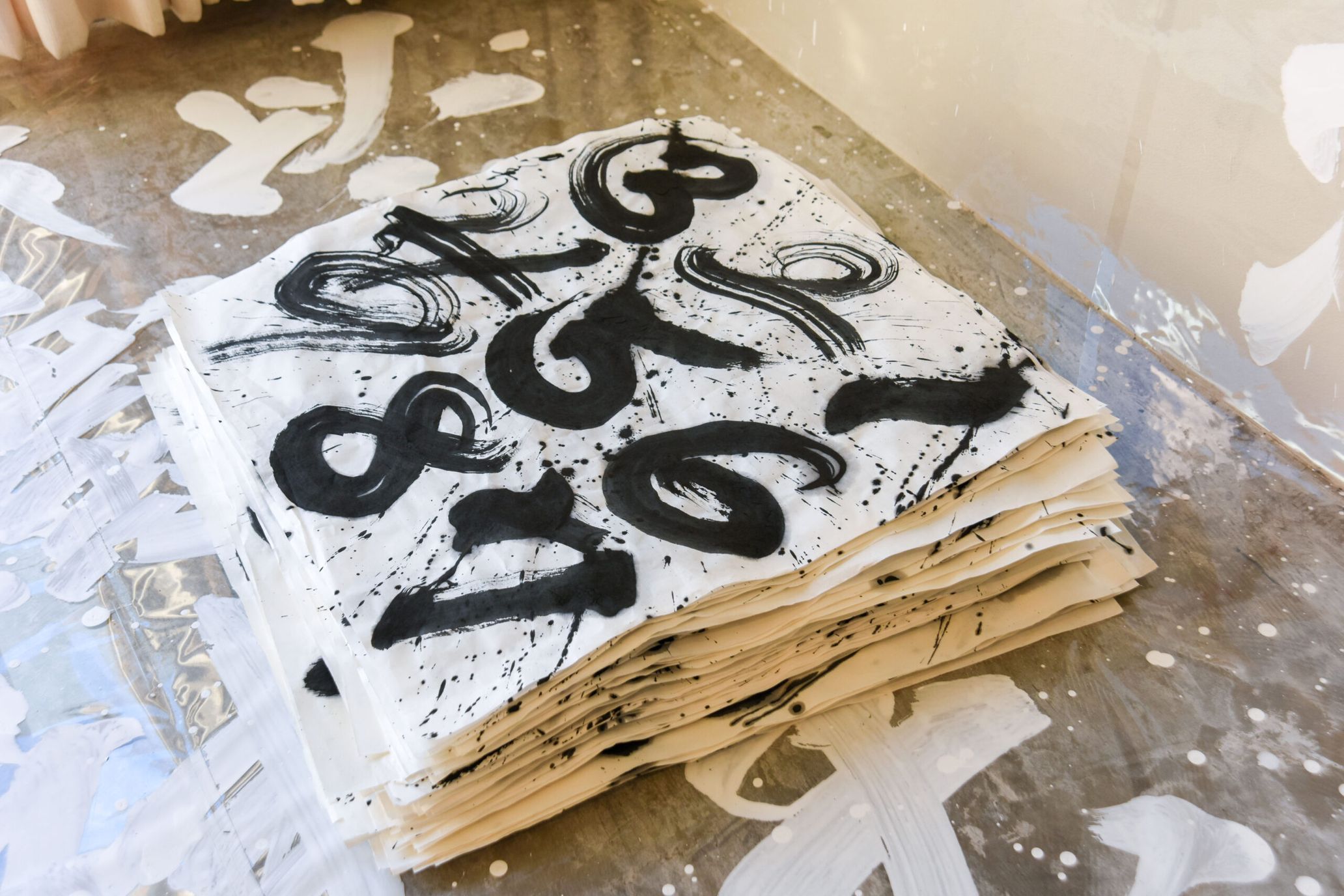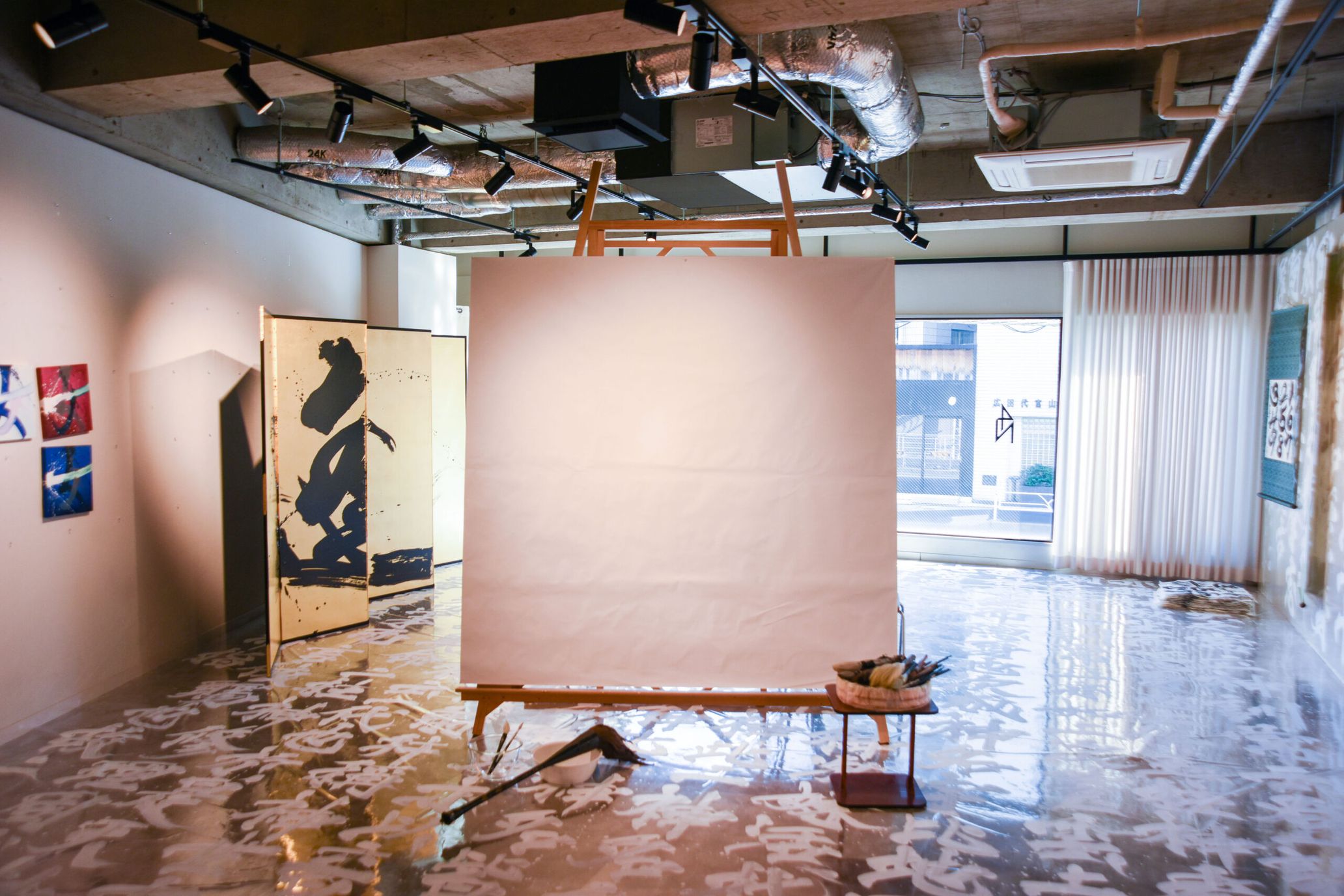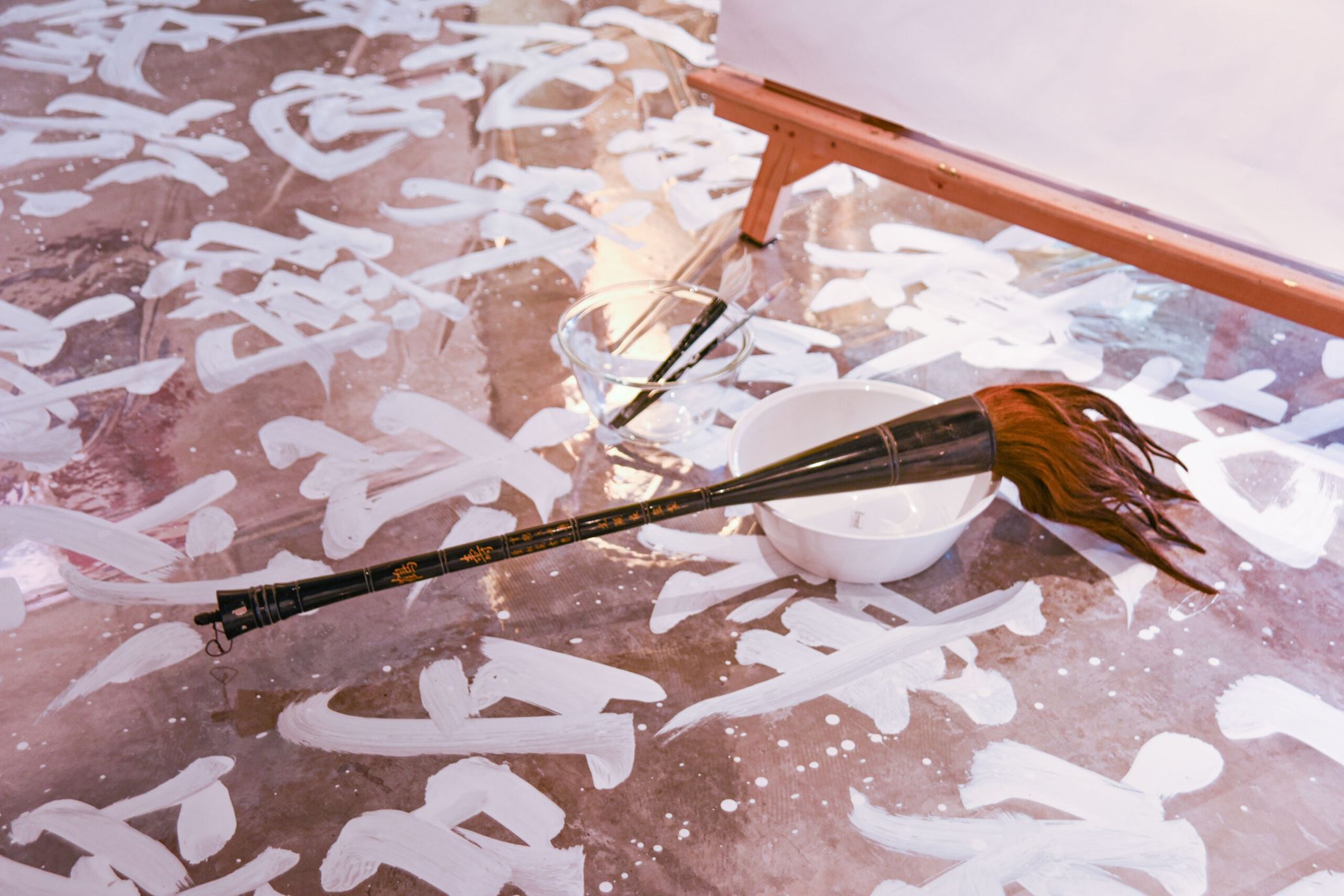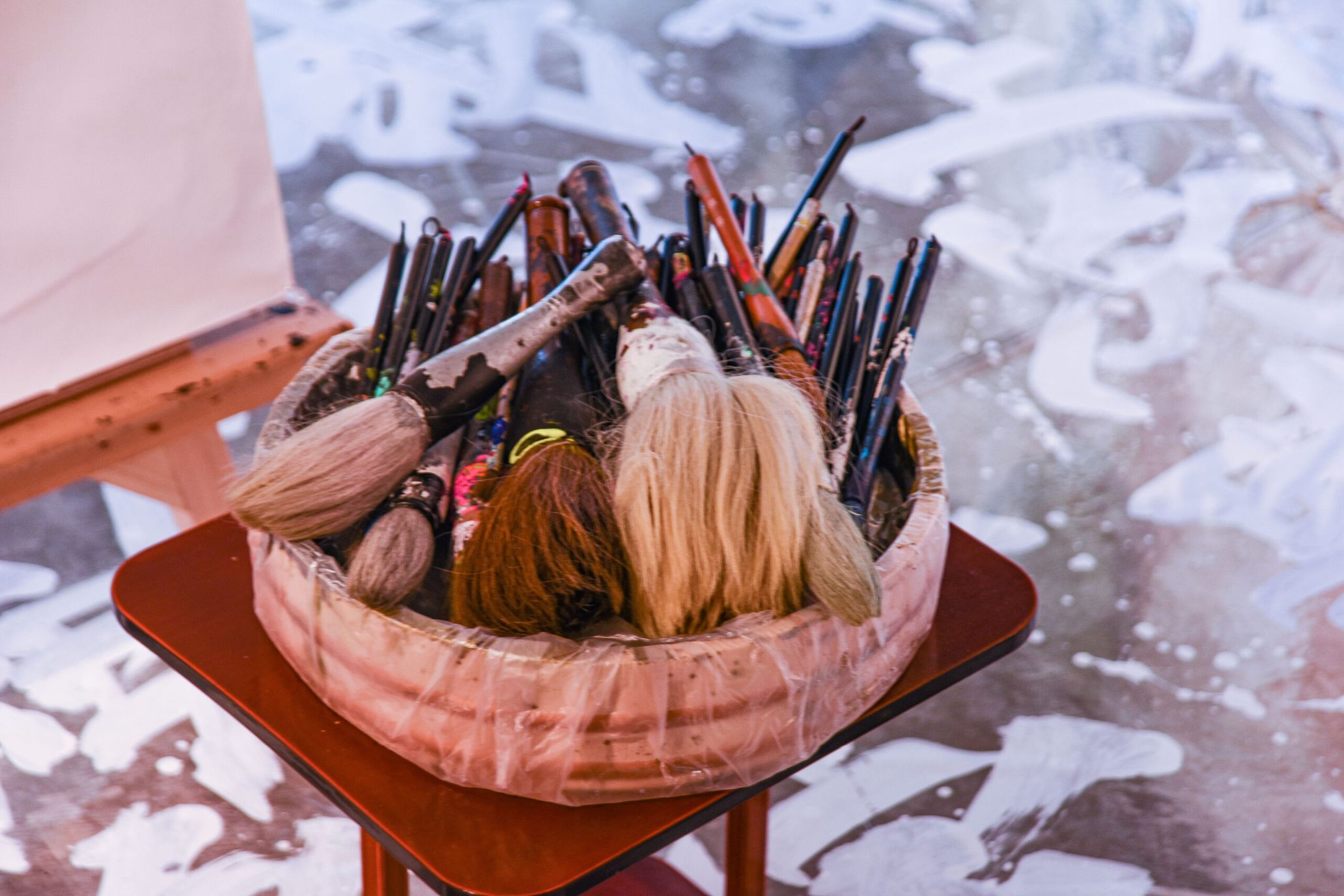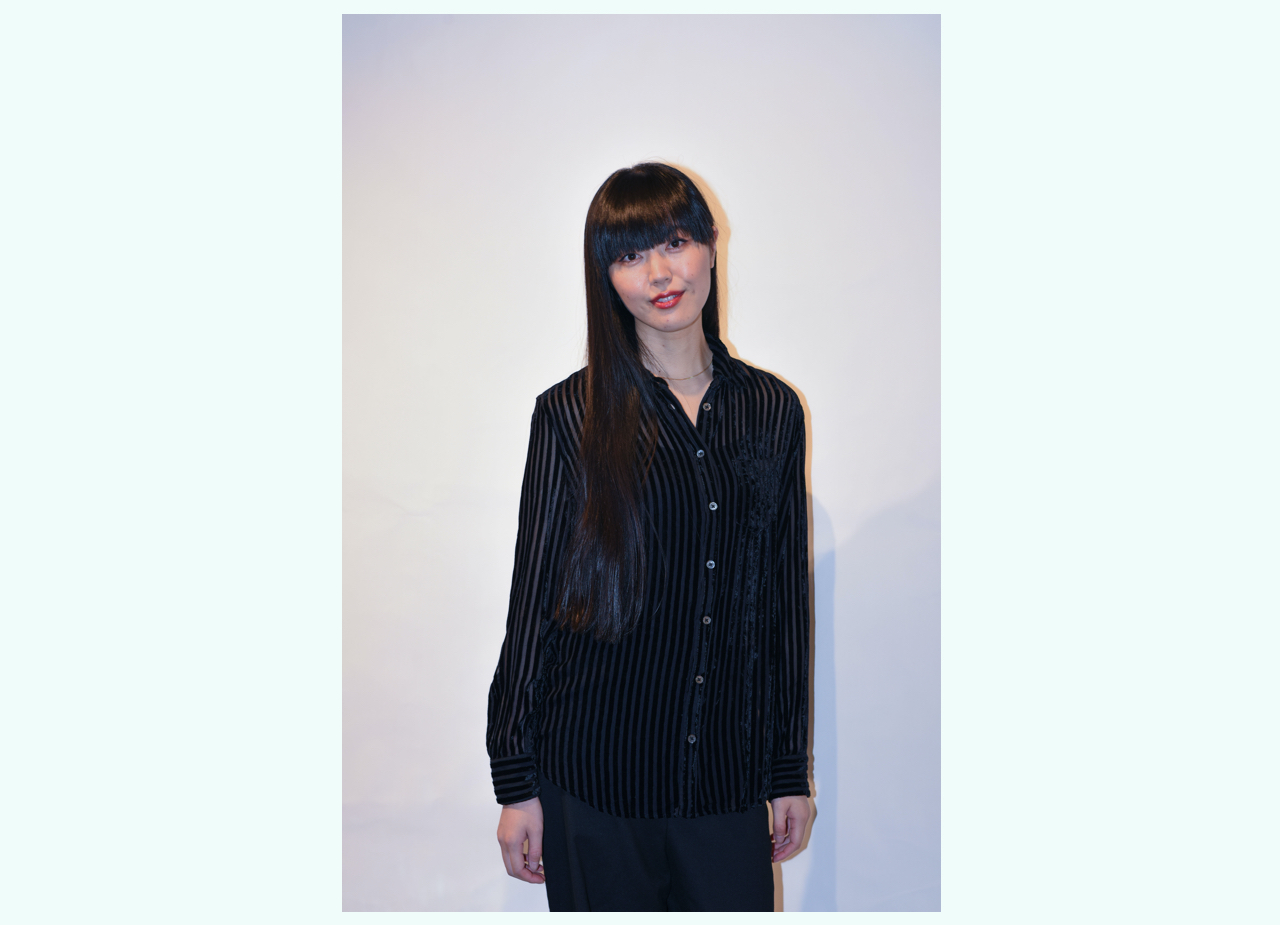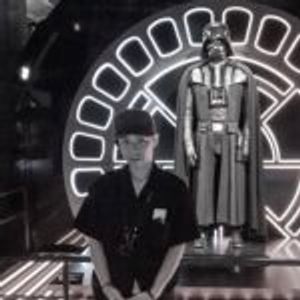Mami is a sought-after calligrapher receiving incessant offers from clients in Japan and abroad. While revering to the classic style, the stalwart artist spawns extraordinary calligraphy works and spreads the aesthetic of calligraphy in a novel form. Her essence brims in her solo exhibition, held at STUDIO 4N in Daikanyama.
She has had more opportunities to exhibit her works at department stores and major facilities; this self-produced exhibition is the first in approximately five years since her last independent show. For this exhibition, she booked the venue by herself and staged her own bona fide self-expressive space, showcasing her collection of works that emanate her identity—So, what are the sentiments behind her creations? In this interview, we look closely at the artist—who has been seizing chances with a proactive approach—to learn why she pursues independence.
The first self-produced exhibition in five years since the solo exhibition abroad
――Your solo exhibition MAMIMOZI was held—How long has it been since the last gig?
Mami: Last March, I did UNKNOWN HARAJUKU at a gallery in Harajuku and an exhibition hosted by Shinsaibashi Parco last July, but they were both showcasing mainly my archives. This solo exhibition is self-produced, and I’m showing my new works. It’s my first independent project since the gig in Taiwan in 2017.
――Why did you do an self-produced gig in Taiwan and not in Japan?
Mami: I’ve traveled to Taiwan a couple of times, so I had a network of people who would help me and was familiar with the place. Also, I was curious to learn more about Taiwanese calligraphy. It was a lot of work as I had to look for a venue and ship out the artworks people had purchased all by myself. But it was successful, so it’s a great memory after all.
――You’ve also done an exhibition in Hong Kong, right?
Mami: Yes. In March 2019, a city called Lan Kwai Fong invited me to do an exhibition. They advertised my event massively, putting up posters and flyers of the event all over the city. I was so surprised and happy at the same time. They welcomed me warmly, and I fell in love with Hong Kong.
――Are calligraphies in Taiwan and Hong Kong different from calligraphy in Japan?
Mami: Yes, I think they are completely different from Japanese calligraphy. Personally, I think hand movements are key in Japanese calligraphy, but with Taiwanese and Hong Kong calligraphies, it’s all about moving the brush with the whole body. I want to adopt their techniques.
――Have you done exhibitions outside of Asia?
Mami: I’ve done it in Paris before. A Japanese girl who goes to a graduate school and studies art curation in Paris opened my solo exhibition as her graduation project.
――I presume Parisians aren’t so familiar with calligraphy, but how were their reactions?
Mami: Obviously, they don’t know the meanings of the characters, so I explained to them what each character meant. But the language barrier was so high that I couldn’t explain thoroughly enough for them to understand the intrinsic meanings. So with calligraphy, I get bigger responses from people in Taiwan and Hong Kong than in Europe and the US.
Self-expressing through works comprised of four core components
――In this exhibition, you’re presenting new series you’ve been working on for a while—The new KUNOICHI series, comprised of the character “女 (woman),” is so colorful and vivid.
Mami: In calligraphy, we often use a maximum of three colors: black, white, and red. But, I’m often attracted to the ones written in four colors. So I wanted to make one too and came up with the idea of making it into four colors with three different colored brushstrokes and a single-colored background. There are many Chinese characters written with three brushstrokes, like “万” in my name (万美), and the characters “山” and “口” of my homeland, Yamaguchi (山口)-prefecture. So, I thought it would be interesting to use the character “女,” which is also written with three brushstrokes but has a distinctive composition of an angled line, curved line, and a straight line. The color mixes are phenomenal, where the lines intersected at two points each. Also, I conveyed women progressing and being active in society by drawing “女” big out of the frame.
――All the last brushstrokes are in white—Is there a meaning behind this?
Mami: At public calligraphy contests, I heard that the winners aren’t chosen based on the quality of their works but selected in order or there’s money involved in the ranking. So to express my will to purge the corrupted side of the calligraphy industry, I drew the upward straight lines in white.
――Ah, I see! Now I’d like to ask you about the BLACK ON BLACK series. This one is the complete opposite of the colorful KUNOICHI series.
Mami: BLACK ON BLACK was the first series I started in 2012. Conventionally, in calligraphy, the characters are drawn in contrasting colors of black ink on white background, so it stands out when it’s hung in a room. But I feel like prominent characters in calligraphy like “夢 (Dream)” or “愛 (Love)” dominate the space too much. It’s attractive, but sometimes, despite the strongness of these words, I see them vulnerable instead. So I decided to write words in black on a black background to saturate the sentiments. Although they are in the same black, they appear differently with their textures and how the light sheds on them. I deem black to be the most colorful hue. Also, this series is made in a record size, particularly for my DJ and rapper friends.
――Your works are colorful and novel and don’t abide by the preconceived notion that “Calligraphy must be drawn with black ink.” Also, I find the idea of mirror artworks novel and intriguing.
Mami: Spending the days in the pandemic, being cooped up, I was reminded of the importance of meeting people in person. When I’m conversing with someone, the way they speak tends to rub off on me. As in the Japanese proverb, “The other person is a reflection of yourself,” the person in front of you is like a mirror reflecting you, and as an embodiment of that sentiment, I drew words on the mirror. I drew on a mirror a few years ago, but it’s my first time showing it as an artwork.
――On the contrary, there are also works presented in a traditional Kakejiku(hanging scroll) form.
Mami: Kakejiku is special to me. My works are often avant-garde, but I don’t want to be evaluated solely with that trait. Instead, I want people to know that I can express myself because I have the basics—that’s why I have the Kakejiku works as well.
――In addition to the KUNOICHI series, BLACK ON BLACK series, the mirror artwork, and Kakejiku, which are the four mainstays of this exhibition, you will also be performing live on-site every day.
Mami: That’s right. The exhibited works are chosen out of hundreds of pieces I’d drawn, but live performances are always a one-shot. I don’t want to be complacent or satisfied with the showcased works—so this daily live performance will be more of a discipline to myself. People will be seeing me draw live, so it’s a real performance, but it’s like a tryout game to me.
――Your calligraphy works are transcended into an avant-garde style, attracting attention from people unfamiliar with calligraphy and engaging them in the art. But do you ever get criticized by conservative people who heavily respect the tradition?
Mami: Sure, I’ve had it a couple of times in the past. When I was in college, a day before my twentieth birthday, I wanted to challenge something I’ve always wanted to do for my last teenage year, so I wrote calligraphy in seven different colors for my school assignment. But I got in trouble with my mentor. My mentor also reprimanded me for writing calligraphy for an event flyer. And that made me realize that you would get condemned if you are off the beaten path as it’s a strict traditional industry, but in other words, you can be creative freely if you are outside the field. So that’s when I had decided to expand the scope of my work and outlook.
――And I believe that decision comes from determining your art style and what you do.
Mami: It doesn’t mean much for me to win a prize anyway, and it’s much more fun to work wherever I want and express whatever I want; this exhibition is based around my sentiments. I’m so grateful to receive offers from various places to do exhibitions. I’ve done exhibitions many times at a large venue in Seibu, and it’s a great experience every time, so I would love to do it again. But to express my bona fide thoughts, I thought it would be more suitable to do everything on my own, so that’s why I self-produced entirely this time. I want to be sincere to myself, do what I want, and keep working independently to pursue what I like.
Mami
Mami is a Calligrapher from Yamaguchi prefecture. She started calligraphy at 9. She is influenced by Hip Hop culture and collaborates with DJs and rappers, drawing for their CD covers and live events. Today, she doesn’t limit herself to a particular genre and provides works to worldwide corporates. Her exhibitions are held mainly in Asia, but she attracts attention from all over the world.
Instagram:@mamimozi
Photography Cho Ongo
Translation Ai Kaneda

